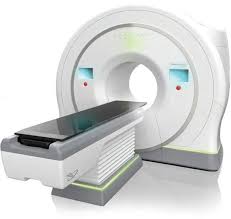Fire Detection System: Ensuring Safety and Swift Response
Fires can be devastating, causing immense damage to properties and endangering lives. In order to prevent such disasters and minimize their impact, the implementation of an effective fire detection system is crucial. A fire detection system is designed to detect the presence of fire, smoke, or heat and promptly alert occupants and emergency responders, allowing for swift action to be taken.
One of the key components of a fire detection system is the smoke detector. These devices are strategically placed throughout a building and are designed to quickly sense the presence of smoke particles in the air. When smoke is detected, an alarm is triggered, alerting occupants to evacuate immediately. Smoke detectors come in various types, including ionization detectors that are highly responsive to flaming fires, and photoelectric detectors that excel at detecting smoldering fires.
Heat detectors are another integral part of a fire detection system. They are designed to sense rapid increases in temperature or abnormally high temperatures in specific areas. Heat detectors are commonly used in environments where smoke detectors may not be suitable due to high levels of dust or steam.
Additionally, modern fire detection systems often utilize advanced technologies such as flame detectors and gas detectors. Flame detectors use optical sensors to detect the presence of flames by analyzing their unique light patterns. Gas detectors can identify hazardous gases like carbon monoxide or natural gas leaks before they reach dangerous levels.
Once a fire is detected, the fire detection system initiates a series of actions to ensure prompt response and mitigation. These actions may include activating sprinkler systems or releasing suppressant agents specifically designed for different types of fires. Simultaneously, alarms are triggered throughout the building, notifying occupants to evacuate immediately.
Fire detection systems can also be integrated with other building management systems for enhanced safety measures. For instance, they can automatically shut down ventilation systems or unlock doors for easier evacuation routes during emergencies.
Regular maintenance and testing are essential for ensuring the reliability and functionality of fire detection systems. Routine inspections, sensor checks, and battery replacements are necessary to guarantee that the system operates optimally when needed most.
In conclusion, a well-designed fire detection system is an indispensable component of any building’s safety infrastructure. By promptly detecting fires or hazardous conditions, these systems play a vital role in protecting lives and minimizing property damage. Investing in a reliable fire detection system not only complies with safety regulations but also provides peace of mind knowing that effective measures are in place to respond swiftly to potential fire incidents.
Commonly Asked Questions About Fire Detection Systems
- What are the 4 types of fire detection systems?
- What are the three basic types of fire detection systems?
- What are the methods of fire detection?
- What is the fire detection system?
What are the 4 types of fire detection systems?
There are four main types of fire detection systems commonly used:
- Smoke Detectors: Smoke detectors are the most common type of fire detection system. They use sensors to detect the presence of smoke particles in the air. When smoke is detected, an alarm is triggered, alerting occupants to evacuate immediately.
- Heat Detectors: Heat detectors are designed to sense rapid increases in temperature or abnormally high temperatures in specific areas. They do not respond to smoke but instead detect changes in heat levels. Heat detectors are often used in environments where smoke detectors may not be suitable due to high levels of dust or steam.
- Flame Detectors: Flame detectors utilize optical sensors to detect the presence of flames by analyzing their unique light patterns. These detectors are highly effective at quickly identifying fires and can be useful in areas where smoke may not be present or visible, such as outdoor spaces or industrial settings.
- Gas Detectors: Gas detectors are designed to identify hazardous gases like carbon monoxide or natural gas leaks before they reach dangerous levels. These detectors can provide early warning signs of potential fire hazards caused by gas leaks and help prevent accidents.
It’s important to note that these types of fire detection systems can often be combined or integrated into a comprehensive fire alarm system for enhanced safety and effectiveness. The selection and combination of these systems depend on the specific needs and requirements of the building or environment being protected.
What are the three basic types of fire detection systems?
The three basic types of fire detection systems are:
- Smoke Detection Systems: Smoke detectors are the most common and widely used type of fire detection system. These systems use various technologies, such as ionization or photoelectric sensors, to detect the presence of smoke particles in the air. When smoke is detected, an alarm is triggered, alerting occupants and initiating appropriate emergency response procedures.
- Heat Detection Systems: Heat detectors are designed to sense rapid increases in temperature or abnormally high temperatures in specific areas. These systems are commonly used in environments where smoke detectors may not be suitable due to high levels of dust, steam, or other factors that could trigger false alarms. Heat detection systems can be particularly useful in areas such as kitchens or industrial settings.
- Flame Detection Systems: Flame detectors utilize optical sensors to detect the presence of flames by analyzing their unique light patterns. These systems are highly effective at quickly identifying fires and can be particularly useful in environments where smoke may not be present initially, such as open spaces or areas with fast-burning fires.
It’s important to note that these three basic types of fire detection systems can often be combined within a comprehensive fire safety plan for maximum effectiveness. By utilizing a combination of smoke, heat, and flame detection technologies, building owners and occupants can ensure early detection and swift response to potential fire incidents.
What are the methods of fire detection?
There are several methods of fire detection that are commonly used to detect the presence of fire or smoke. These methods include:
- Smoke Detectors: Smoke detectors are the most widely used method of fire detection. They work by sensing smoke particles in the air. There are two main types of smoke detectors: ionization detectors, which detect small particles produced by fast-burning fires, and photoelectric detectors, which respond to larger smoke particles typically produced by smoldering fires.
- Heat Detectors: Heat detectors sense changes in temperature or abnormally high temperatures in specific areas. They are often used in environments where smoke detectors may not be suitable due to high levels of dust, steam, or other airborne contaminants.
- Flame Detectors: Flame detectors use optical sensors to detect the presence of flames by analyzing their unique light patterns. These detectors are particularly useful in areas where flame-based fires are more likely to occur, such as industrial settings or areas with flammable materials.
- Gas Detectors: Gas detectors are designed to identify hazardous gases like carbon monoxide or natural gas leaks before they reach dangerous levels. They can be used as a standalone system or integrated into a fire detection system for comprehensive monitoring.
- Beam Detectors: Beam detectors use an optical beam that is transmitted between a transmitter and receiver unit. If smoke interrupts the beam, an alarm is triggered. Beam detectors are often used in large open spaces such as warehouses or atriums.
- Aspirating Smoke Detection (ASD): ASD systems draw air through a network of pipes into a central detector unit, where it is analyzed for the presence of smoke particles. This method allows for early detection and can be particularly useful in environments with high ceilings or inaccessible areas.
- Video-based Detection: Video-based detection systems use cameras equipped with advanced image processing algorithms to analyze video footage for signs of smoke or flames. This method can provide real-time monitoring and early detection in large areas.
It’s important to note that different environments and applications may require different combinations of these methods to ensure comprehensive fire detection coverage. Consulting with fire safety professionals and adhering to local fire safety regulations is essential when designing and implementing a fire detection system.
What is the fire detection system?
A fire detection system is a network of interconnected devices and equipment designed to detect the presence of fire, smoke, or heat in a building or area. The primary purpose of a fire detection system is to provide early warning and alert occupants and emergency responders so that appropriate actions can be taken to mitigate the fire and evacuate people safely.
Fire detection systems consist of various components, including:
- Smoke detectors: These devices use sensors to detect smoke particles in the air. When smoke is detected, an alarm is triggered, alerting occupants to evacuate.
- Heat detectors: These devices sense rapid increases in temperature or abnormally high temperatures in specific areas. They are used in environments where smoke detectors may not be suitable due to high levels of dust or steam.
- Flame detectors: These devices use optical sensors to detect the presence of flames by analyzing their unique light patterns.
- Gas detectors: These devices identify hazardous gases such as carbon monoxide or natural gas leaks before they reach dangerous levels.
- Control panel: This central unit receives signals from the detectors and activates alarms and other response mechanisms when a fire is detected.
- Alarms: Audible and visual alarms are activated when a fire is detected, alerting occupants to evacuate immediately.
- Suppression systems: Some fire detection systems are integrated with automatic suppression systems like sprinklers or specialized extinguishing agents that activate when a fire is detected, helping to control or extinguish the flames.
- Monitoring systems: Fire detection systems can be connected to monitoring centers that receive alerts and can dispatch emergency responders when necessary.
Fire detection systems can be tailored to suit different types of buildings and applications, ranging from residential homes to large commercial complexes or industrial facilities. Regular maintenance, testing, and inspections are essential for ensuring the reliability and effectiveness of these systems over time.
Overall, fire detection systems play a critical role in early warning and response during fires, helping save lives, minimize property damage, and facilitate safe evacuations.




